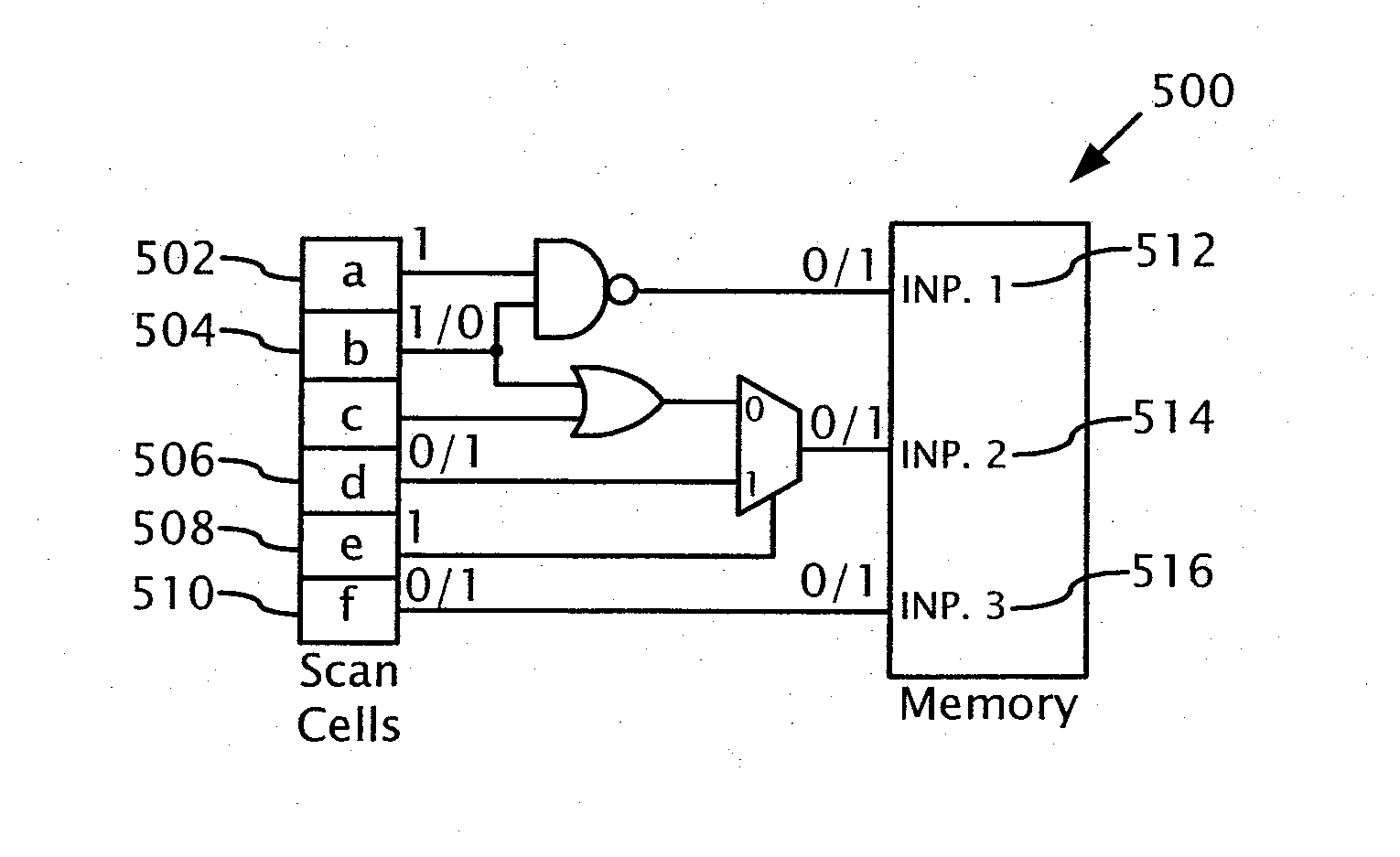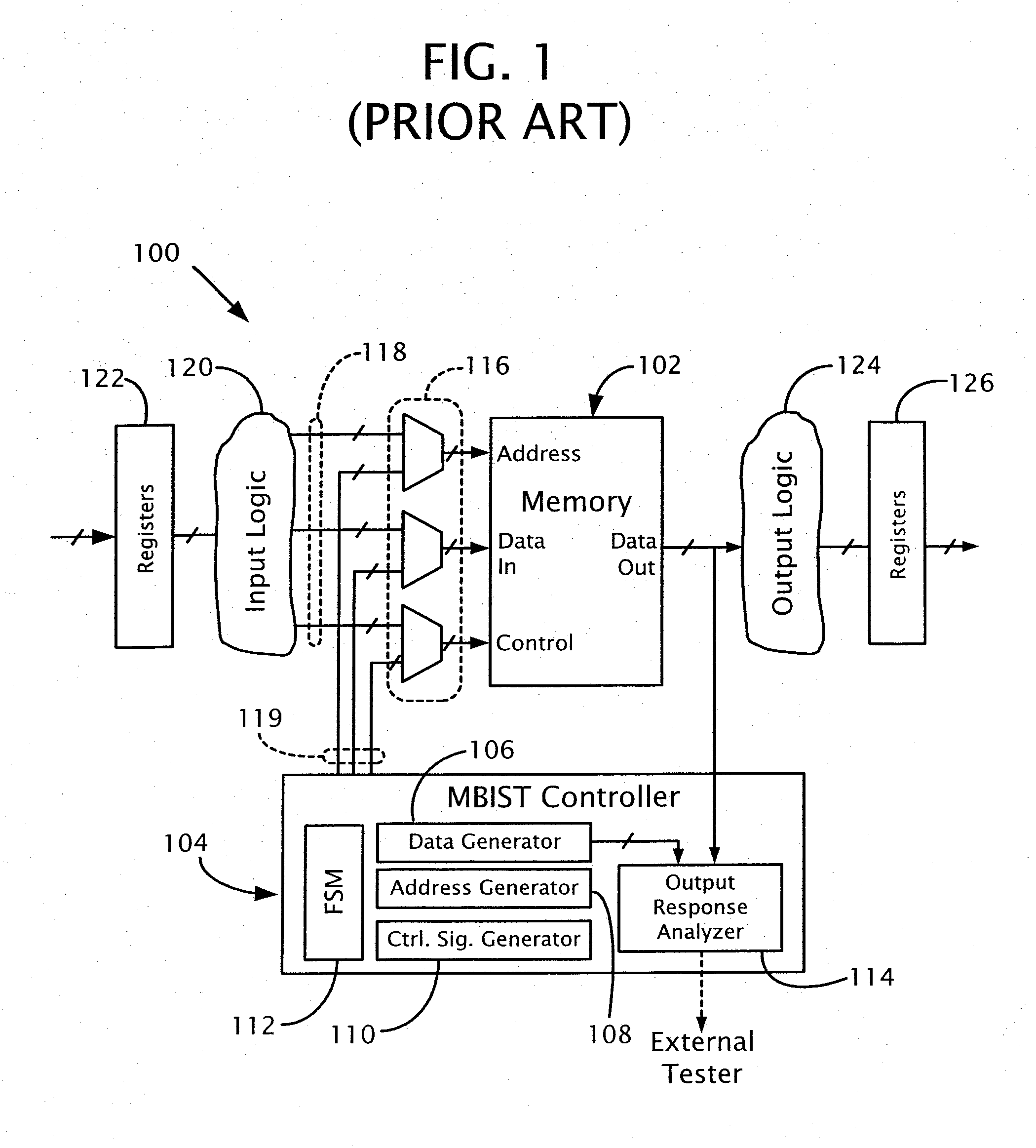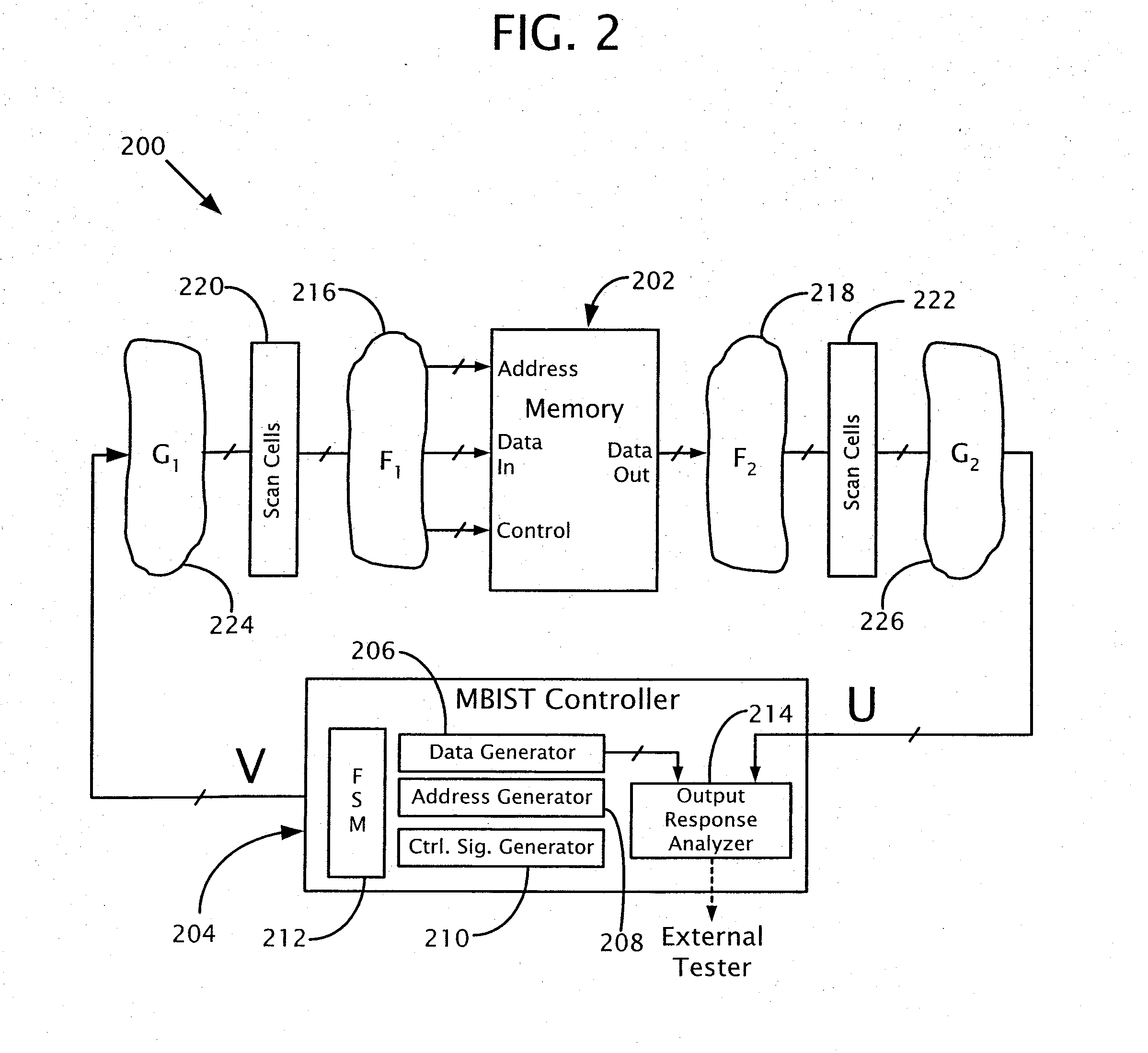Testing embedded memories in an integrated circuit
a technology of embedded memory and integrated circuit, which is applied in the direction of error detection/correction, program control, instruments, etc., can solve the problems of long test time, permanent penalty for memory performance, and plurality of multiplexers, so as to reduce the overhead of hardware and minimize hardware.
- Summary
- Abstract
- Description
- Claims
- Application Information
AI Technical Summary
Benefits of technology
Problems solved by technology
Method used
Image
Examples
Embodiment Construction
Disclosed below are representative embodiments of methods and apparatus for testing embedded memories in an integrated circuit using built-in self-test (BIST) hardware. Such hardware is collectively referred to as “memory BIST” or “MBIST.” Desirably, testing is performed at-speed and with less or none of the unnecessary delay that is introduced by conventional MBIST circuits. The disclosed methods and apparatus should not be construed as limiting in any way. Instead, the present disclosure is directed toward novel and nonobvious features and aspects of the various disclosed embodiments, alone and in various combinations and subcombinations with one another. Moreover, the methods and apparatus are not limited to any specific aspect or feature or combinations thereof, nor do the disclosed methods and apparatus require that any one or more specific advantages be present or problems be solved.
Although the operations of some of the disclosed methods and apparatus are described in a parti...
PUM
 Login to View More
Login to View More Abstract
Description
Claims
Application Information
 Login to View More
Login to View More - R&D
- Intellectual Property
- Life Sciences
- Materials
- Tech Scout
- Unparalleled Data Quality
- Higher Quality Content
- 60% Fewer Hallucinations
Browse by: Latest US Patents, China's latest patents, Technical Efficacy Thesaurus, Application Domain, Technology Topic, Popular Technical Reports.
© 2025 PatSnap. All rights reserved.Legal|Privacy policy|Modern Slavery Act Transparency Statement|Sitemap|About US| Contact US: help@patsnap.com



